|
|
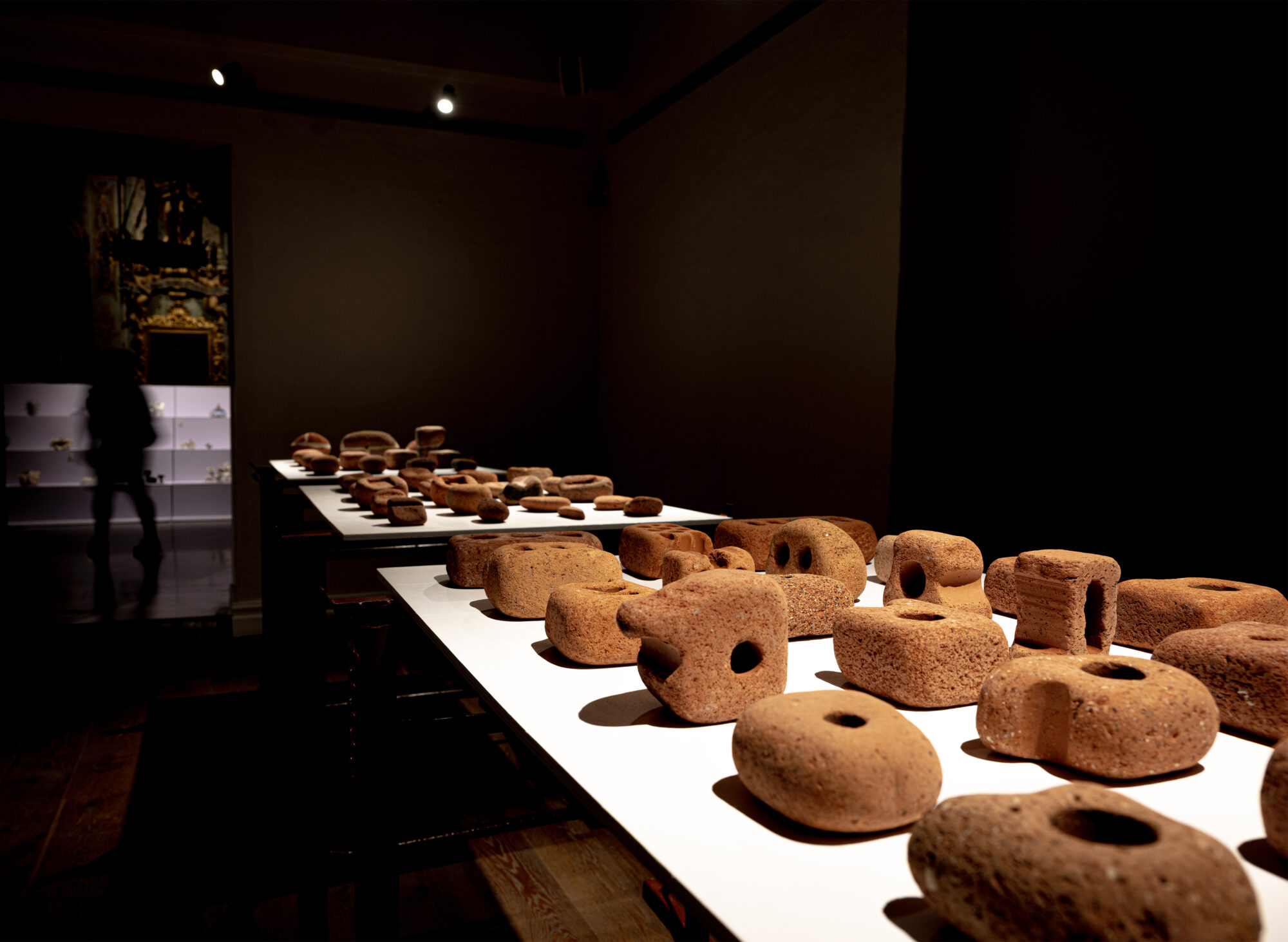
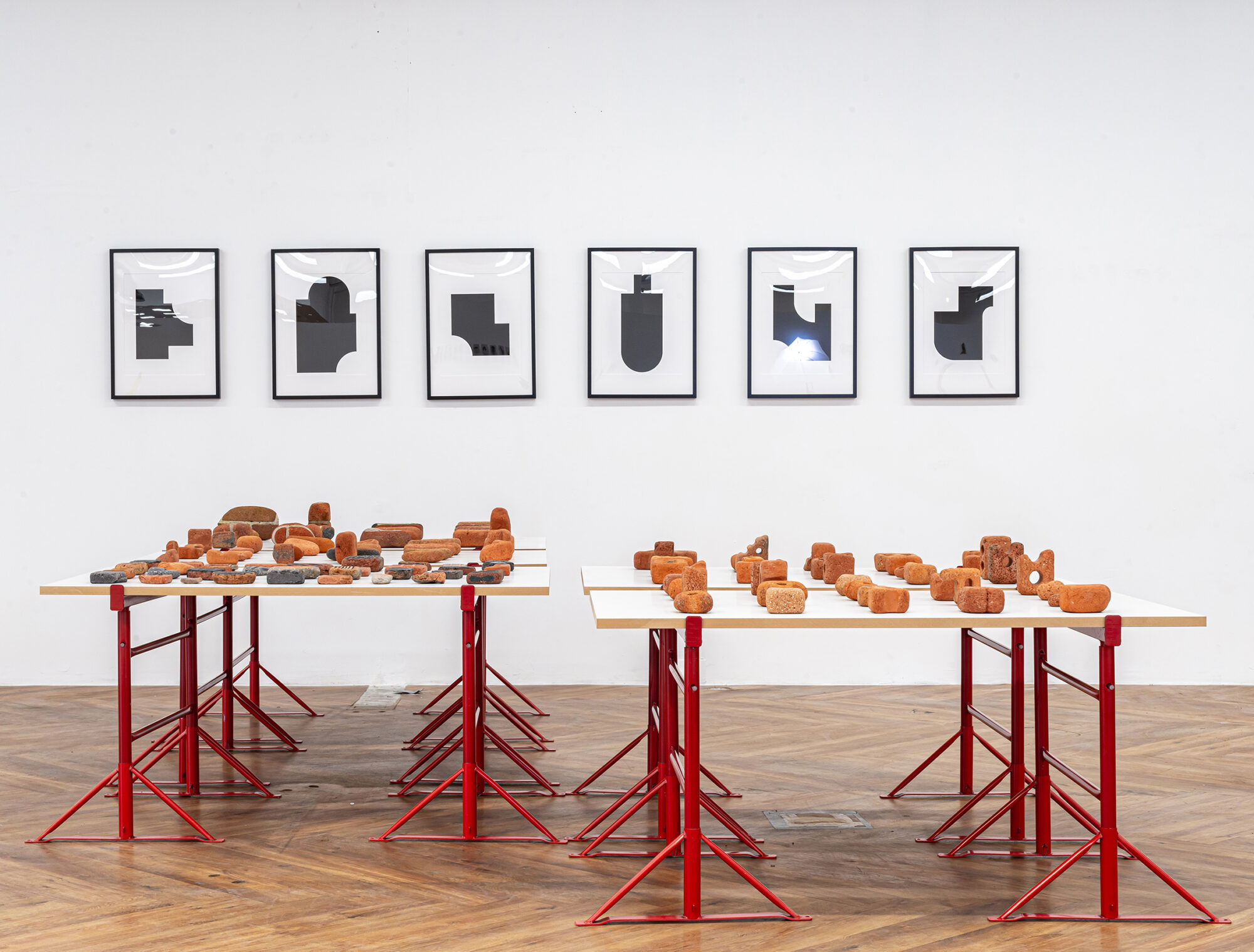
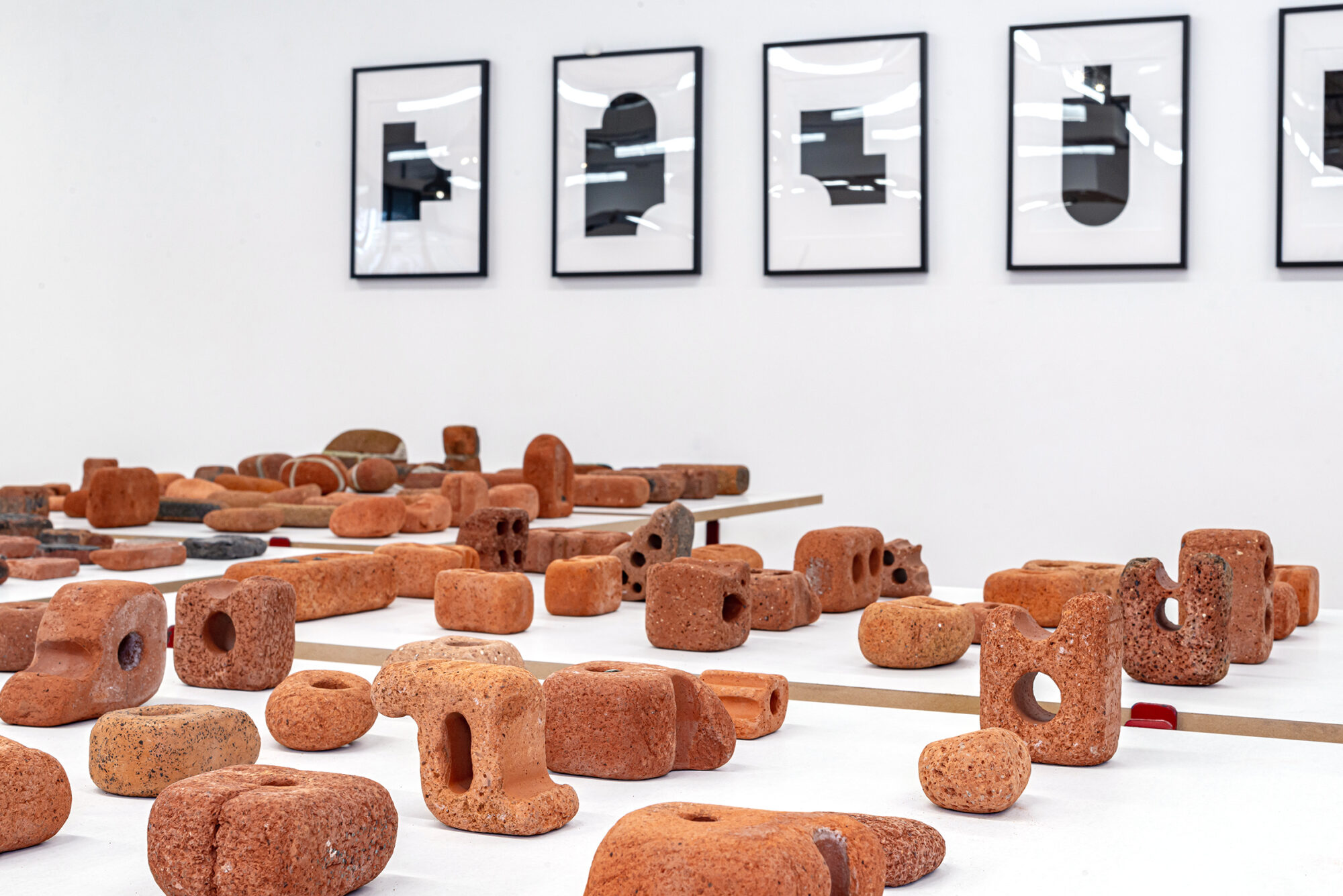
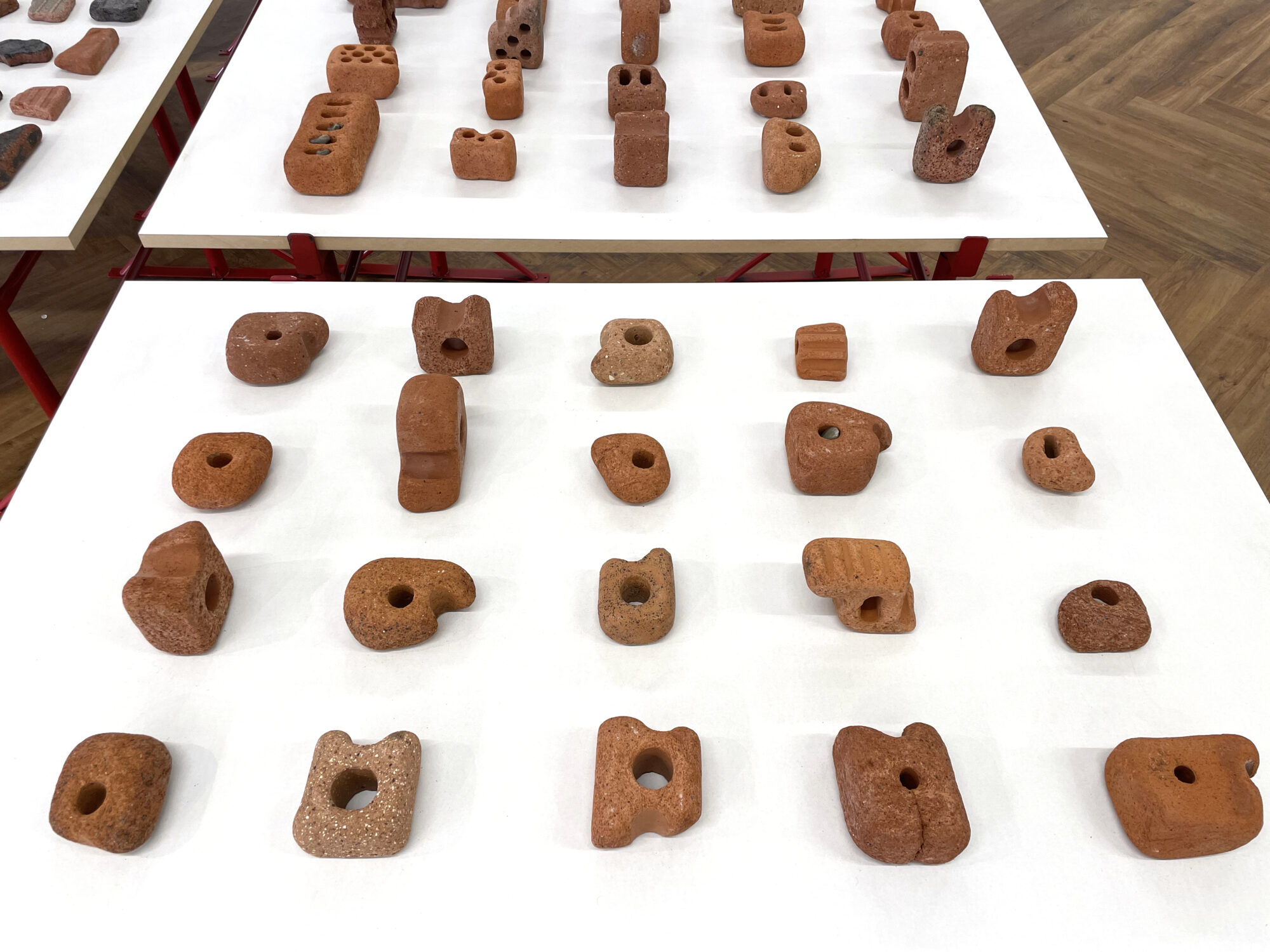
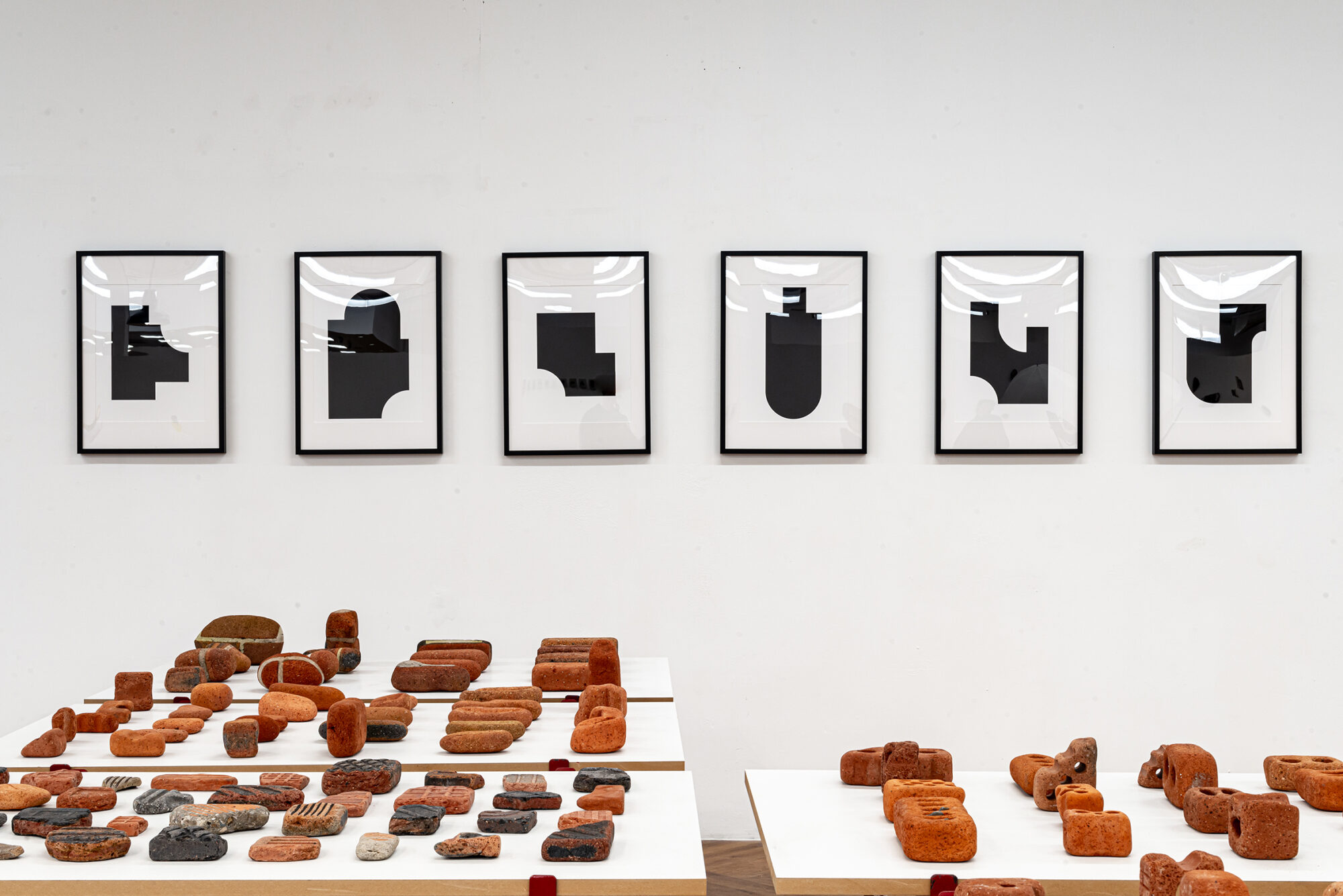
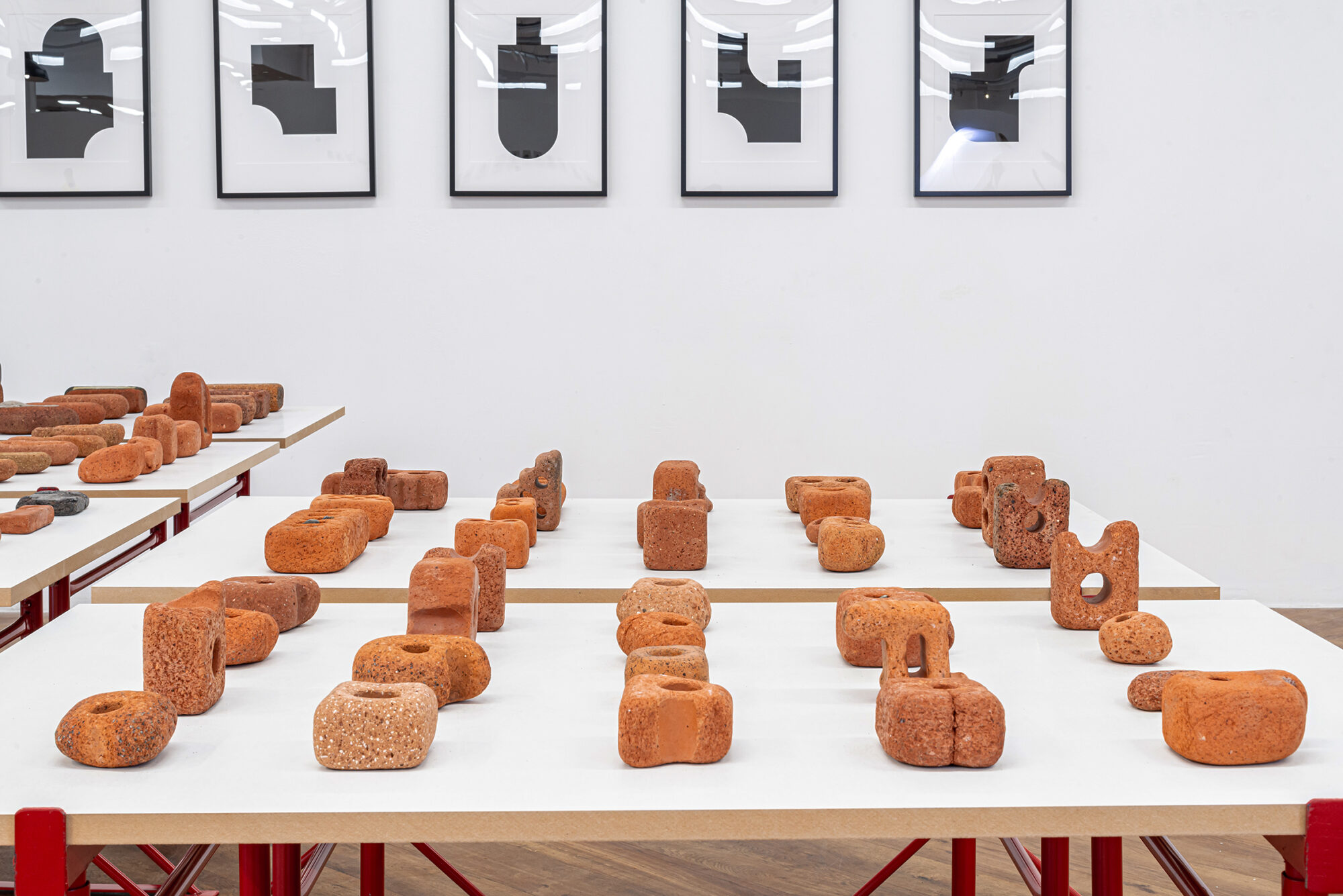
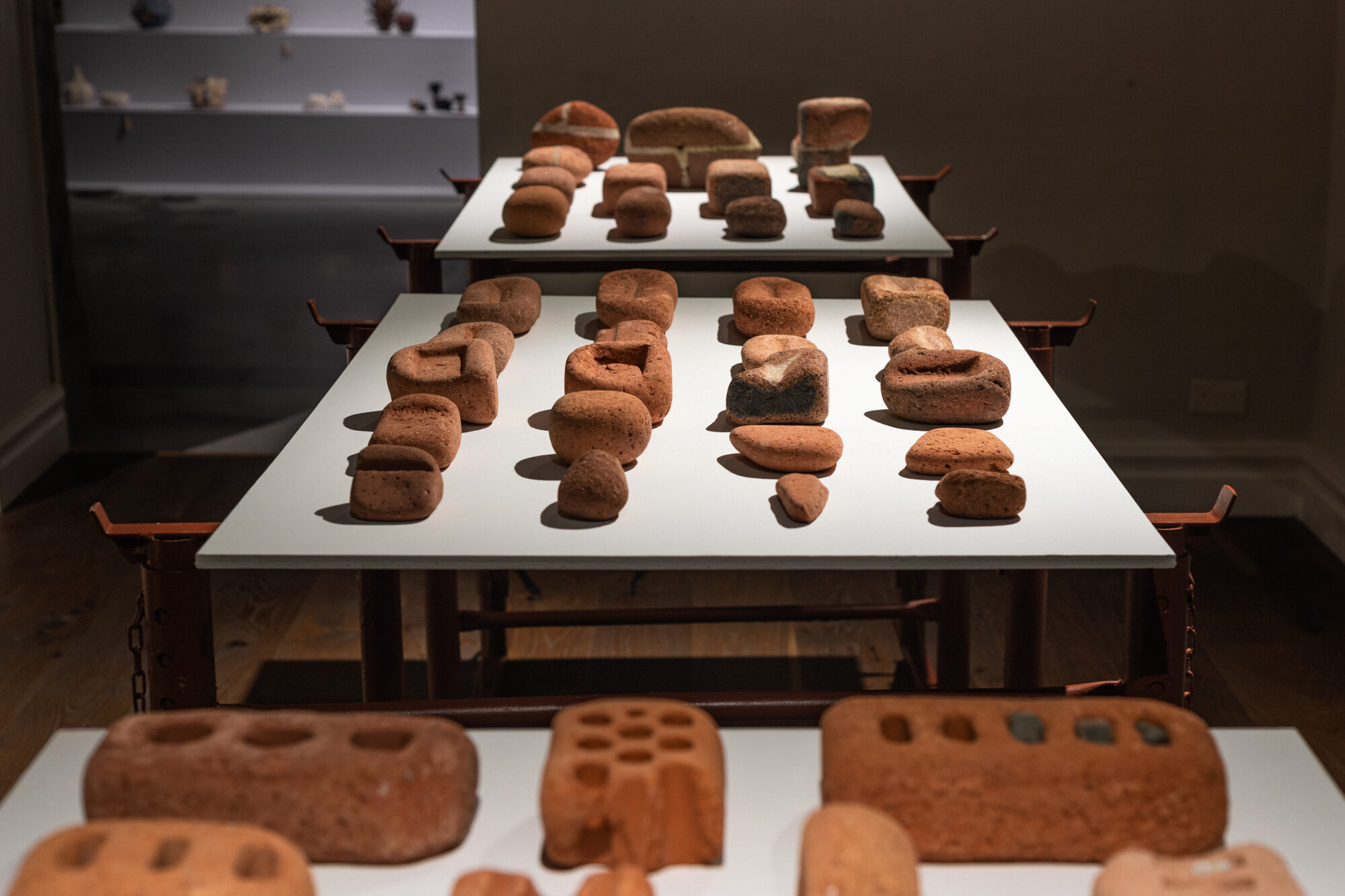
Sea Change, 2024
Earthenware clay, stoneware clay, brick clay
Beyond the lifeboat station at Crosby Beach, head north and for almost a mile the shore is carpeted in rubble; broken bricks and stones, headstones, lintels and ornate cornices with decorative carvings and lettering. From above, the debris looks like a long gash on the shoreline, the visible remnants of a deliberate act of domicide. But mostly there are bricks. They colour this stretch of beach a deep red, dark against the pale sand, strewn in their hundreds of thousands, slowly being reclaimed by the sea.
During WW2, the city of Liverpool was intensively bombed by the Luftwaffe, killing many people and destroying thousands of buildings and homes. After the war, much of the rubble from the bomb damage was dumped on the beach at Crosby, five miles north of the city. At first you see indeterminate mounds of rubble, but as you look more closely, you see the bricks and stones have been eroded by the tide, worn and softened into organic shapes. The sea has sculpted them, rendering beautiful new forms. They tell stories about the material qualities of clay, concrete and stone – strong building blocks made fragile – as they gradually revert to grains of sand.
Sea Change examines these fragments, carrying within them traces of lost or forgotten histories and considers what we choose to commemorate and what we consign back to the earth. This display of ‘waste’ material and newly made pieces brings into question the idea of ‘value’ and which stories are deserving of our attention.